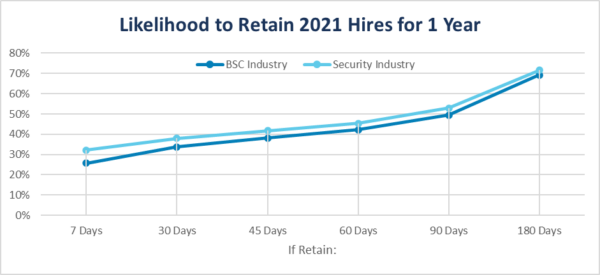Sourcing Candidates for Distributed Workforces
Around the globe, the rate of unemployed persons per job remains high.
In fact, the US, UK and New Zealand all recently reported there is less than one person available per open job in the labor market. As of September 2022, Australia reported an exact 1:1 ratio.
In this competitive hiring market, it’s important to rethink the way you source candidates. With better recruitment, you’ll keep contracts filled now and keep the employees you’ve hired long into the future.
What is candidate sourcing?
In the hiring process, candidate sourcing is defined as the strategy and action steps involved in finding, nurturing and hiring employees for your business.
Candidate sourcing channels
There are three main candidate sourcing channels.
1. Online sourcing
Online sourcing involves attracting candidates through any online effort.
Although you shouldn’t rely 100% on online job boards and your business’s careers webpage, you shouldn’t ignore them, either. Here’s why:
- Both tactics enable you to provide clear job descriptions and candidate criteria
- The application process is streamlined and straightforward
- With quick-apply options available for many sites, job seekers can submit an application in a matter of seconds
Your careers page provides a platform to share the true flavor of what it is like to work at your company. Use these tips to improve your careers page engagement.
- Share testimonials and accolades
- Link to blogs or videos that can give a prospective employee a better sense of what a workday would look like
- Emphasize any benefits that differentiate you from the rest of the labor market.
2. Offline sourcing
Especially with field-based roles, applicants are attracted to job openings through a mixture of opportunity and ease of applying. People don’t want to spend time filling out long, detailed applications and resumes. So, offer ways to make applying faster and easier.
Use text recruiting:
By scanning a QR code in the field or texting a number or keyword you’ve advertised on a job posting, applicants can send their basic hiring information to your team. You can respond via text to set up interviews or follow up, but you can also reach out through your other contact methods, like phone or email.
Be visible:
Make a presence at in-person recruiting events happening in your area. Or, try to hold your own events at your corporate headquarters.
Diversify your recruitment pools:
Especially when looking to fill seasonal or event positions, students or recent graduates are optimal candidates. Various TEAM Software clients have seen success with this kind of recruitment technique, and take the tactic one step further by funneling these hires through six-week programs including job site experience and other curriculum.
3. Referral Sourcing
Employee referral programs serve as an incentive for an existing employee to refer a potential new employee to your hiring staff. If the candidate is hired, the existing employee receives a benefit, typically of monetary value.
Many companies have programs like this in place, yet don’t see referrals as a leading hiring source. The reason why could be because the policy is out of sight, out of mind.
Make sure your human resources department is sharing policies like a referral program with employees consistently and often, especially considering industry turnover rates.
As you’re developing these programs, build them with retention in mind. Make incentives beneficial enough to motivate your staff to make referrals.
Build in agreements that both the new hire and referring employee need to remain
employed for a certain period of time – a common timeframe is 90 days, at least – to qualify for the benefit. Churn rates decrease – with more than 50% of new hires lasting at least one year – after the first 90 days of employment, especially if communication and job training has been effective and engaging.

How to source candidates in a tight labor market
Don’t forget rehires
An untapped resource in hiring could be people who have already worked for your company in the past.
In the past few years, many employees left workforces for higher wages offered in different industries. Some of those churned employees, though, are already looking to leave your competitor’s industries, citing difficult hours or working conditions.
Assuming these past employees left on good terms, they could be prime candidates to fill your hiring funnel.
These individuals are already familiar with your industry and job expectations, and it’s also likely re-onboarding will be quicker and smoother than a new hire, especially if you’ve retained information in an employee master file or similar software feature.
How do you source passive candidates?
Social media is a great tool to source passive candidates, which are people who aren’t actively searching for a job change, but might be open to making a switch for the right opportunity.
Social media helps increase job visibility and engagement. You can use your social media channels to give prospective employees a candid idea of company culture and employee engagement.
Many social media platforms provide ways to target audiences with specific experience or skills, increasing the quality of applicant leads seeing your content. You can also use organic (unpaid) posts, live streams and stories to appeal to passive candidates.
Start improving your hiring process
Are you ready to improve your hiring process? Contact TEAM Software by WorkWave today.
To learn more about attracting, hiring and retaining employees in the current labor market, check out our recent labor market and economics data report.
